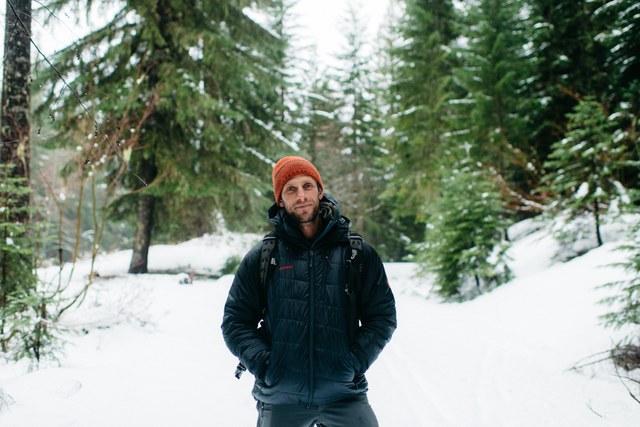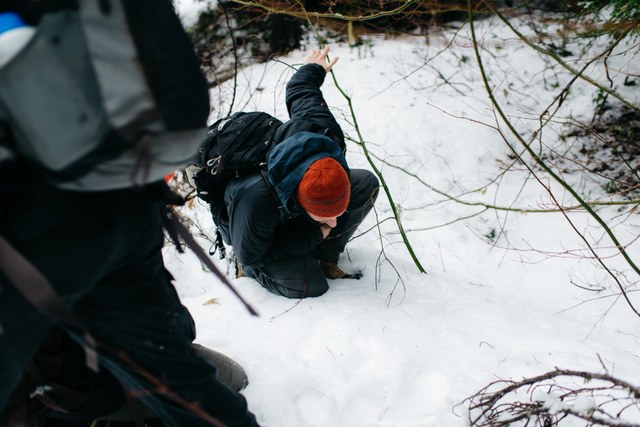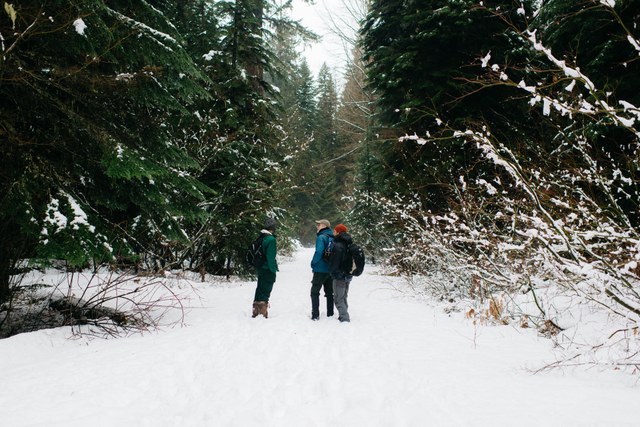Meet the Trail Community: Wildlife Biologist
To wildlife biologist David Moskowitz, going on a hike might mean walking through someone else's bedroom. Learn how this perspective changes his experience on trail.
For WTA's 50th Anniversary, we're highlighting trail users across Washington state. Hear what hiking means to them, and the future of their on-trail pursuits.

David Moskowitz has been conscious of humanity’s effect on the natural world since his first hike up Mount Diablo in the East Bay area of San Francisco. He remembers leaving the trailhead and making his way through vibrant green grasses and wildflowers, past a bubbling creek to the summit. Despite having hiked away from city life and into nature, once he reached the top his primary view was of a pink-roofed subdivision and beyond that, a sea of development. It was clear to David at that moment just how intertwined humans are with the natural world.
That hike was years ago, but David still considers humanity’s impact on the landscape every time he heads onto a trail. A wildlife biologist, author and photographer, he evaluates human and animal interaction nearly every time he steps outside—his most recent project with Conservation Northwest has him and a team of volunteers evaluating how I-90 east of Snoqualmie Pass has affected migration patterns of animals. Their research helped ensure the funding for the land bridge that’s being constructed just east of Lake Keechelus.

But it’s not just roads that can disrupt wildlife. Bipedal visitors can affect an animals habitat as well.
“We’re sometimes walking on trails can that lead to other animal’s bedrooms, living rooms and dining rooms.”
He explains, “Our presence on the landscape, regardless of intent—whether we’re extracting a resource or just enjoying it—will impact it in one form or another, and may affect the other species living there. It’s just the reality of us as an animal and how we evolve with the natural world.”
That’s not necessarily bad, but it’s something he thinks more people should keep in mind.
"We need people to have a personal relationship with the natural world—it’s a vital part of conservation.”
As an author and educator, David encourages trail use, and finds that for him, being out on trails helps give him perspective.
Time in the natural world is personally very rewarding to me. It helps put me in context. I enjoy being in places that are not dominated by things humans have constructed. Being in the woods allows me to put us as humans in a much broader natural context. It’s humbling.”

But with more people on trail seeking the peace and quiet of nature, the more likely our presence may disturb other animals. He explains it like this:
“If you encounter a bear on the trail, two things might happen. You may change your plans and hike away from the bear, in which case the bear displaced you. Or, the bear may move around you, in which case you displaced it. With more and more people on trail, people will more frequently displace that bear.”
So how do we balance visiting the natural world and respecting its residents? David thinks the answer lies partially in a healthy trail networks.
“It’s important to design trail systems with not just recreation in mind, but with the recognition that we’re walking through someone else’s home.“
For David, thoughtful trail planning (by evaluating wildlife's movements through an area) means he can still hike, just not through an important breeding or feeding ground.
David respects the environment where he works and hikes by tuning in to the landscape. Often, when he’s tracking an animal or studying migration patterns, even if he’s just on a trail run, he wears clothes that blend into the landscape, and never brings along earbuds.
“This helps put me more in the mindset of being part of the natural world. On a metaphorical level, if I want to be more in tune with my surroundings, I can focus better when my clothes and accessories don’t create a barrier between me and the environment. It also lets me know when I may be disturbing wildlife."

He reflects that in addition to the citizen science program he pioneered through Conservation Northwest, volunteers with WTA and other trails organizations are helping created those healthy trail networks, allowing the public to become more directly involved in the places we care about and where we recreate.
As more people begin to live and recreate on Washington’s trails, David thinks it’s vitally important to consider all aspects of the recreation economy.
“I like to look at thing interdisciplinarily because it helps get rid of the dichotomy of being either or pro-recreation or pro-conservation. The answer lies in bringing those things together."
Interested in learning more about citizen science program? Find more information on wildlife monitoring at conservationnw.org.


Comments
Trail maintenence is the best wildland management tool.
David Moskowitz's article is a timely addition to discussions about bootleg trails resulting from budget cuts and resulting "no new trails" policies. -Eric Burr
Posted by:
Burr on Apr 22, 2016 05:23 AM